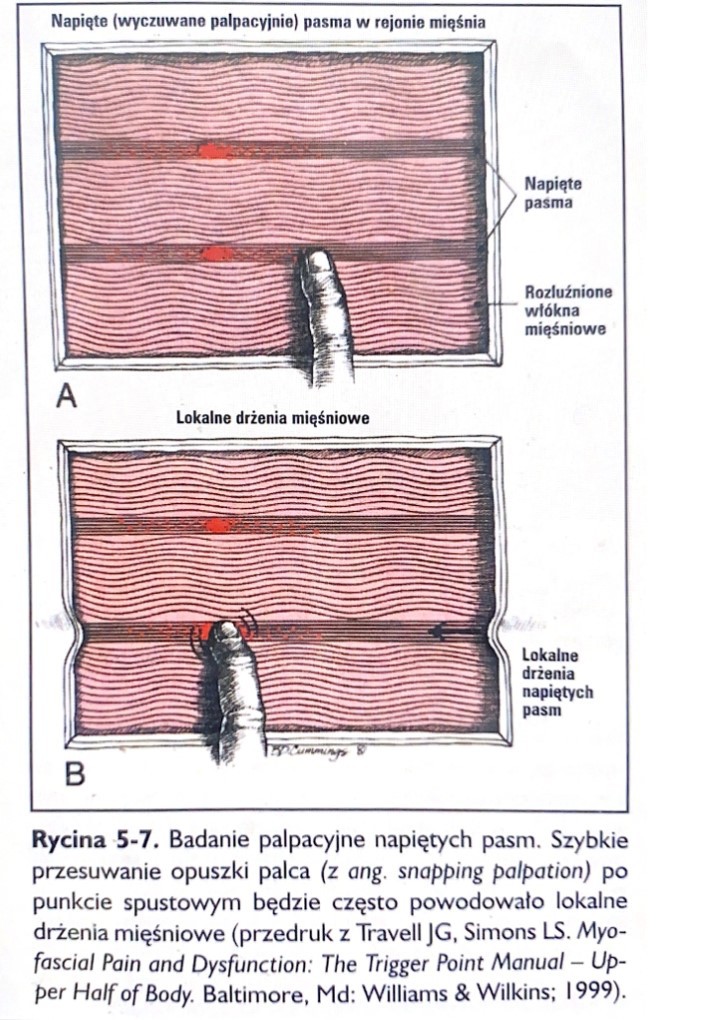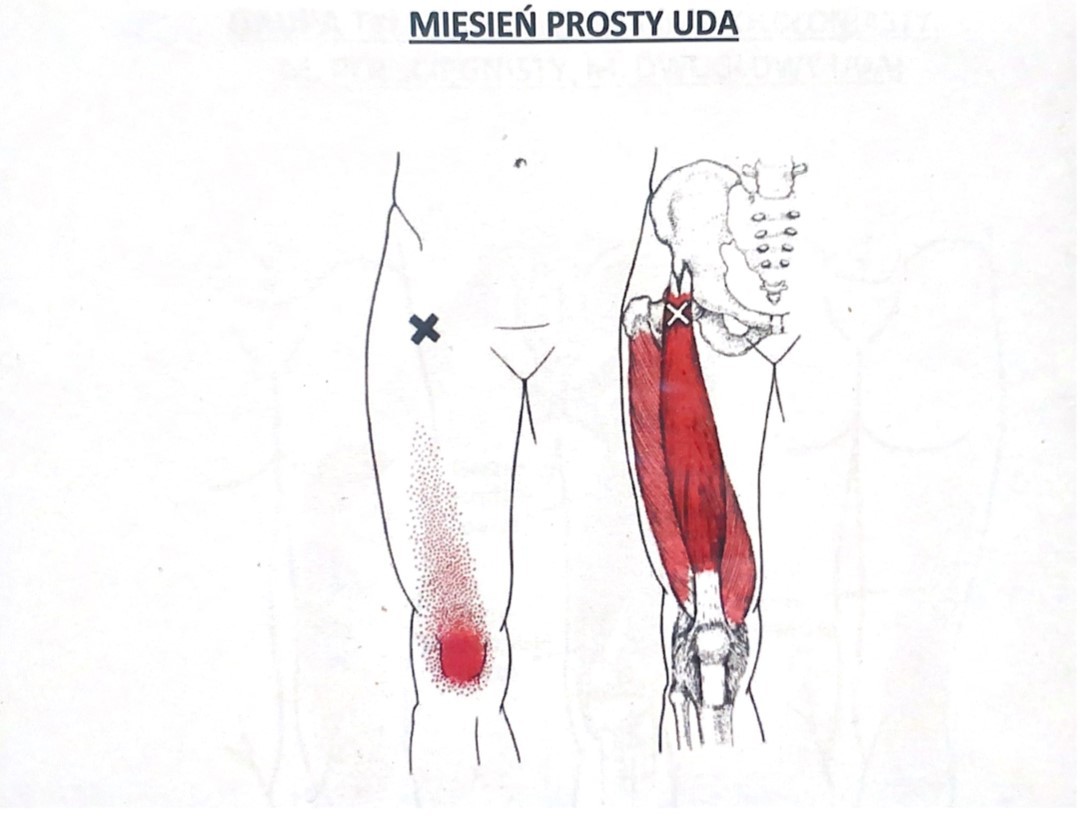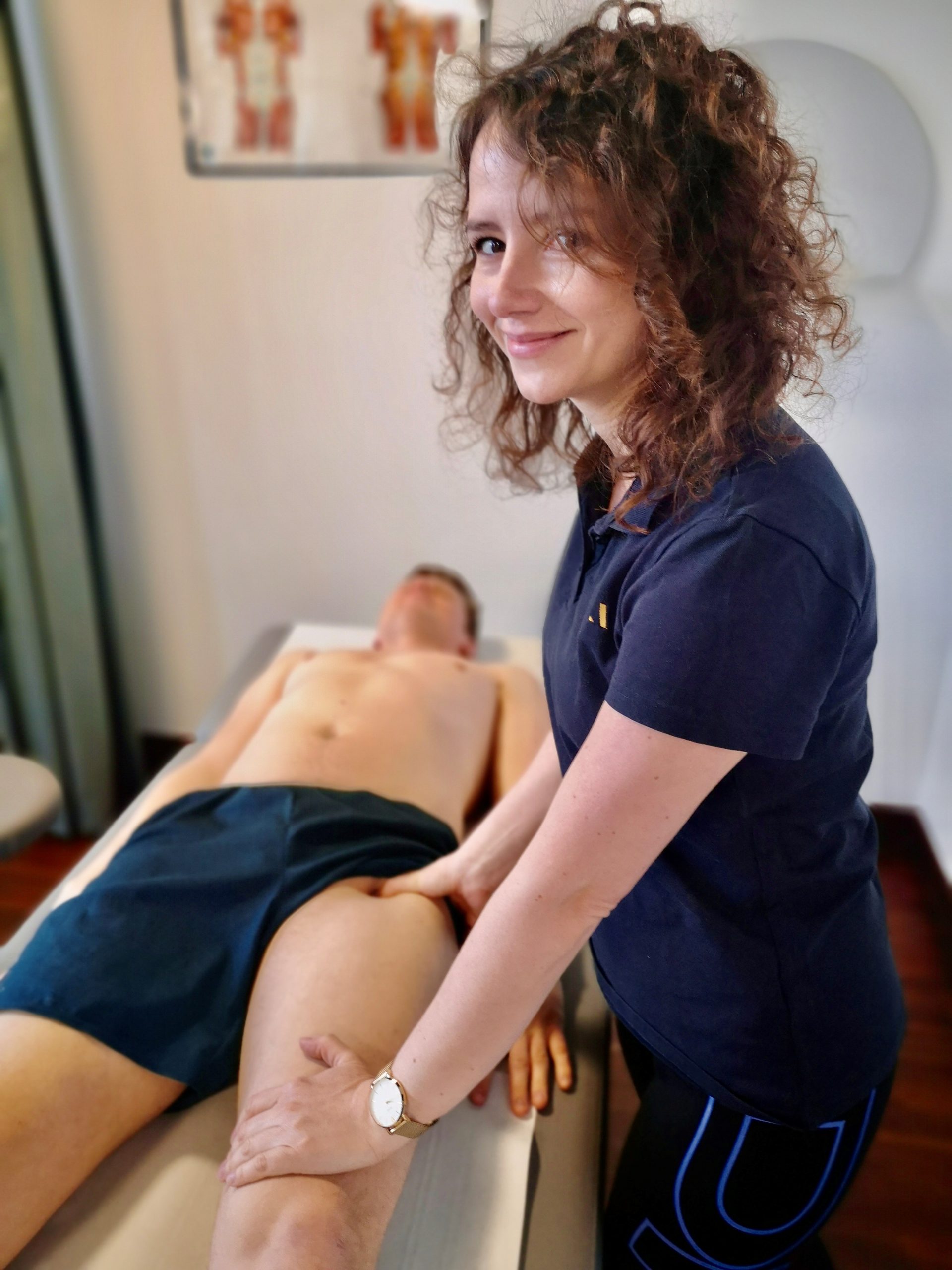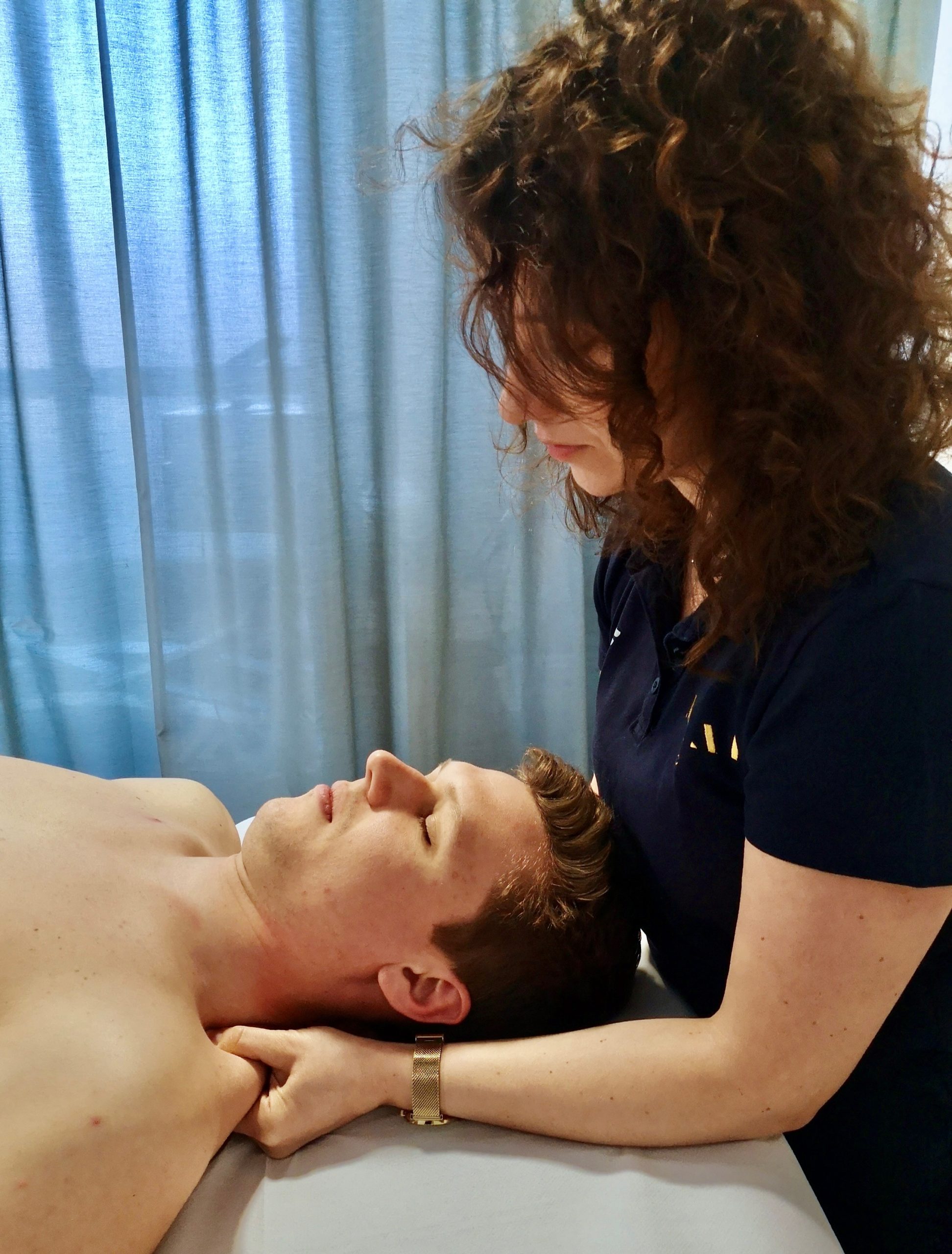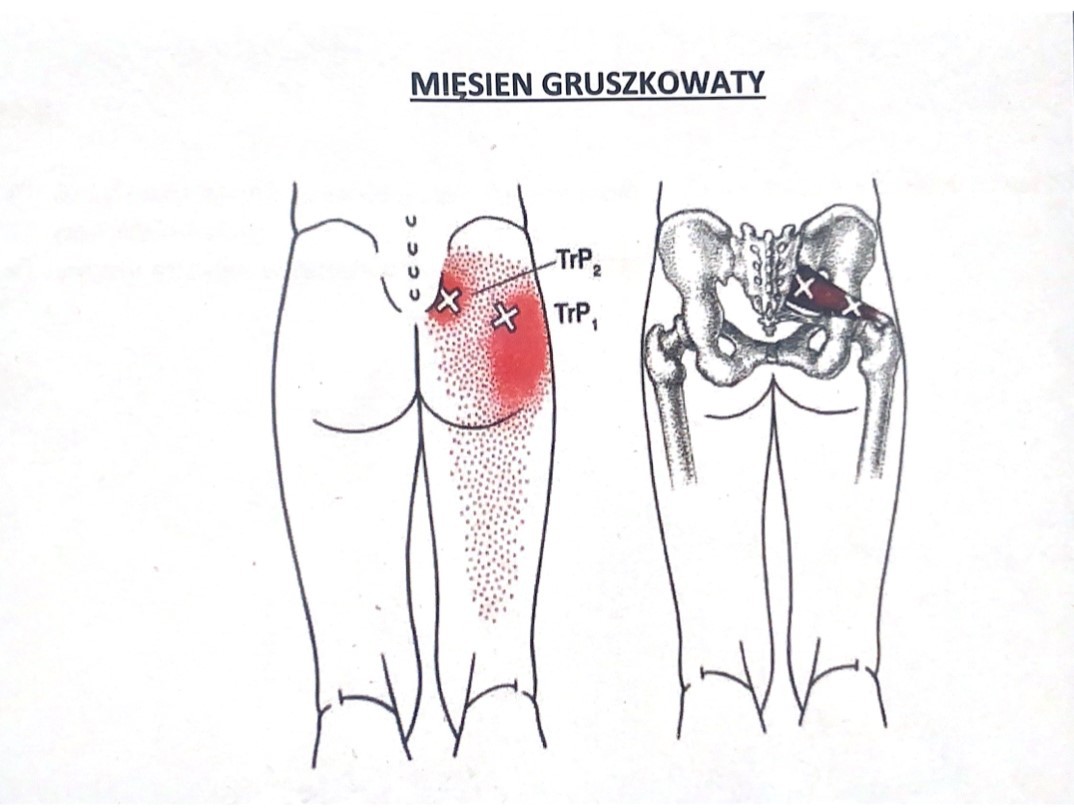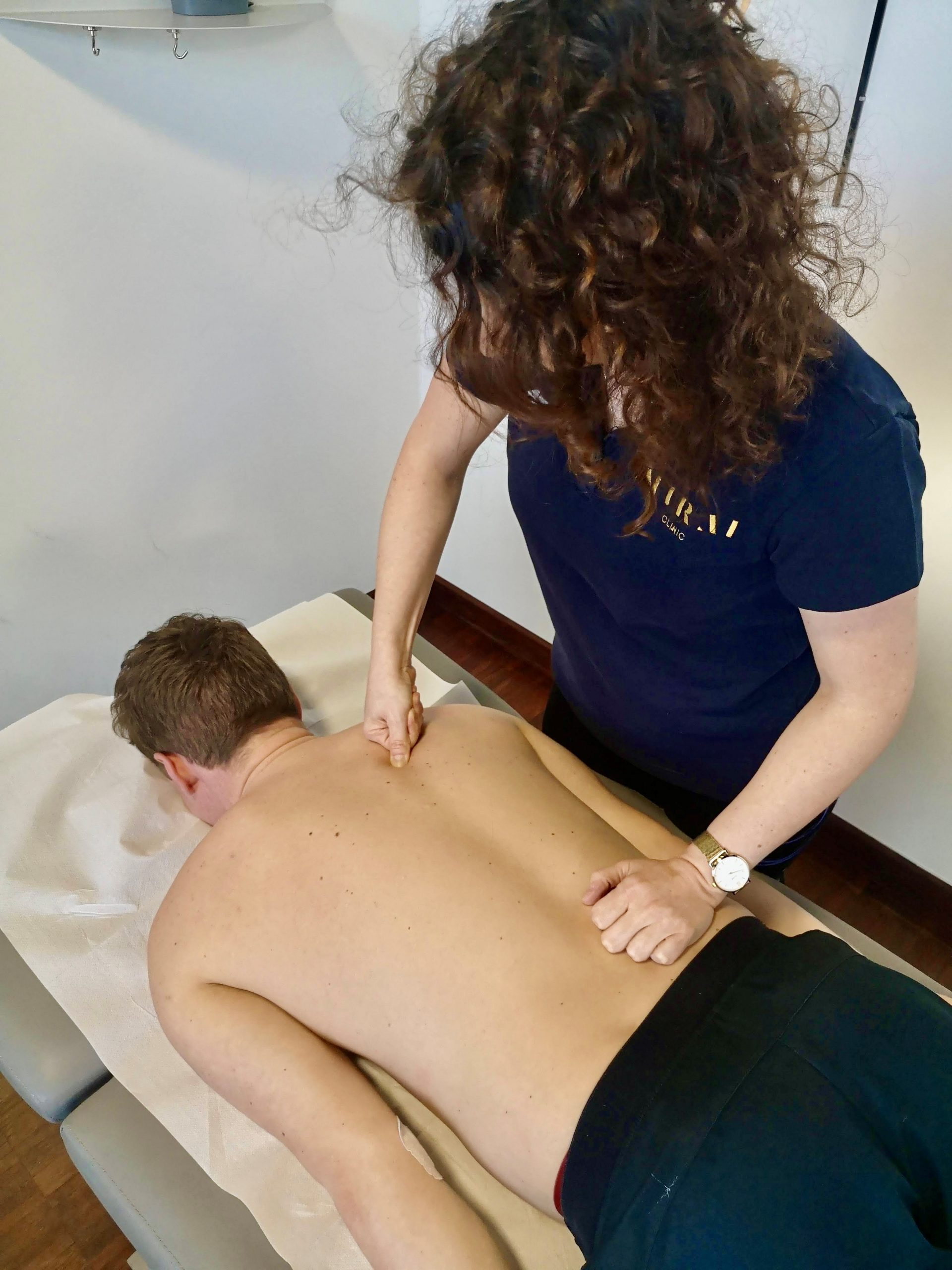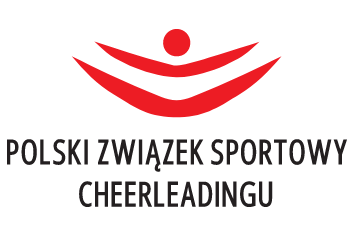Pain is always a warning signal from the body, indicating that something is not right inside. It is a stimulus that usually motivates us to seek the help of a specialist. It is important to know that pain can have various origins. It can be caused by joints, muscles, ligaments, or internal organs. Pain can be felt directly at the site of a specific dysfunction, but it can also manifest in a distant location from the source of pain. This situation often occurs in the presence of myofascial trigger points.
What is a trigger point?
A trigger point is an area of increased sensitivity within a skeletal muscle, and when pressed or stimulated, it can cause referred pain in a distant area from the area being treated.
Rycina 1 Badanie punktu spustowego (Źródło: „Punkty spustowe i terapia mięśniowo-powięziowa” D. Kostopoulos, K. Rizopoulus)
To provide a better illustration: an active trigger point near the insertion of the rectus femoris muscle (in the hip region) can cause symptoms such as knee pain located at the front, mimicking a condition called patellar tendonitis, commonly known as jumper’s knee. This example highlights the importance of thorough examination of the patient and differential diagnosis.
Rycina 2 Punkt spustowy na mięśniu prostym uda oznaczony jako krzyżyk i obszar, gdzie może być odczuwany ból na czerwono. (Źródło: „Punkty spustowe i terapia mięśniowo-powięziowa” D. Kostopoulos, K. Rizopoulus)
Muscles with active trigger points, in addition to generating referred pain, will also be characterized by weakness and decreased range of motion in the joint they control, especially in the end phase of movement. This is due to stiffness and increased tension within the muscle.
Types of trigger points
Active trigger points – cause spontaneous pain, are sensitive to touch, and reproduce characteristic patterns of referred pain both during and without pressure. They reduce muscle elasticity and cause weakness.
Latent trigger points – do not cause spontaneous pain, but are sensitive to touch, and the referred pain can only be reproduced during pressure. They also reduce muscle elasticity and cause weakness. They can reactivate and become active trigger points.
Satellite trigger points – can develop within the muscle where the primary trigger point is located, or in muscles along the path of referred pain characteristic of that trigger point. They become deactivated after the primary trigger point is removed.
Zdjęcie 1 Terapia punktu spustowego na mięśniu prostym uda (Źródło: archiwum własne)
Causes of trigger points
There can be many causes of myofascial trigger points. The most common cause is microtrauma resulting from repetitive movements or muscle overuse due to prolonged static positions. Other causes include functional and structural asymmetries. Sometimes the cause may be more evident when pain starts after sudden, forceful movement or unusual activity.
Zdjęcie 2 Terapia punktu spustowego na mięśniu czworobocznym grzbietu lewym (Źródło: archiwum własne)
In a biochemical aspect, active trigger points within muscle bands show the presence of chemical compounds (bradykinin, prostaglandins, interleukin-1, substance P) that sensitize nociceptive receptors, which are nerve endings that transmit pain signals to the brain. Due to their strongly irritating effect, other information may also be misinterpreted by the body as painful, thus significantly lowering the pain threshold. This imbalance can lead to muscle fiber contraction and local swelling that compresses capillaries, resulting in tissue ischemia and hypoxia, further exacerbating energy metabolism disturbances. Sarcomeres, which are the basic functional units of striated muscles, become shortened. As they cannot fully relax in an energy crisis, this, in correlation with local tissue hypersensitivity and irritation, can lead to the development of active trigger points.
Rycina 3 Punkt spustowy na mięśniu mostkowo – obojczykowo – sutkowym oznaczony jako krzyżyk i obszar, gdzie może być odczuwany ból na czerwono. (Źródło: „Punkty spustowe i terapia mięśniowo-powięziowa” D. Kostopoulos, K. Rizopoulus)
Rycina 4 Punkt spustowy na mięśniu gruszkowatym prawym oznaczony jako krzyżyk i obszar, gdzie może być odczuwany ból na czerwono. (Źródło: „Punkty spustowe i terapia mięśniowo-powięziowa” D. Kostopoulos, K. Rizopoulus)
A less invasive but also less precise method is the use of pressure progression technique, which involves gradually increasing tissue compression using flat fingertips or a pinch grip. After feeling tissue resistance, we maintain pressure until the tissues relax. The procedure can be repeated several times, stretching the tissues manually between sets or using post-isometric muscle relaxation.
Regardless of the technique used, the goal is to initially induce greater tissue hypoxia and ischemia, followed by reflexive vasodilation, rapid hyperemia, and thus a decrease in the concentration of chemical substances that irritate pain receptors and increase protective muscle tension.
Diagnosis
At the beginning of each therapy session, a detailed interview and physical examination are important. Only then can active trigger points be sought. When identifying the muscle responsible for the dysfunction, one should consider not only the location of the referred pain but also the biomechanical circumstances during which the injury or overload may have occurred.
Rycina 5. Punkt spustowy na mięśniu pośladkowym małym lewym oznaczony jako krzyżyk i obszar, gdzie może być odczuwany ból na czerwono. (Źródło: „Punkty spustowe i terapia mięśniowo-powięziowa” D. Kostopoulos, K. Rizopoulus)
The basic criteria are finding a tense band within which there are painful nodules that, when pressed, elicit patterns of referred pain, and confirming with the patient that the reproduced pain resembles the one they experience on a daily basis.
Zdjęcie 3 Terapia punktu spustowego na mięśniu równoległobocznym prawym (Źródło: archiwum własne)
Trigger point therapy can be used on practically any patient. It is most commonly used as one component of a broader manual therapy approach. One of the advantages is that if the pain the patient is experiencing is indeed directly correlated to an active trigger point, often just one therapy session can significantly reduce the symptoms.
Zdjęcie 4 Terapia punktu spustowego na mięśniu czworobocznym lędźwi prawym (Źródło: archiwum własne)


